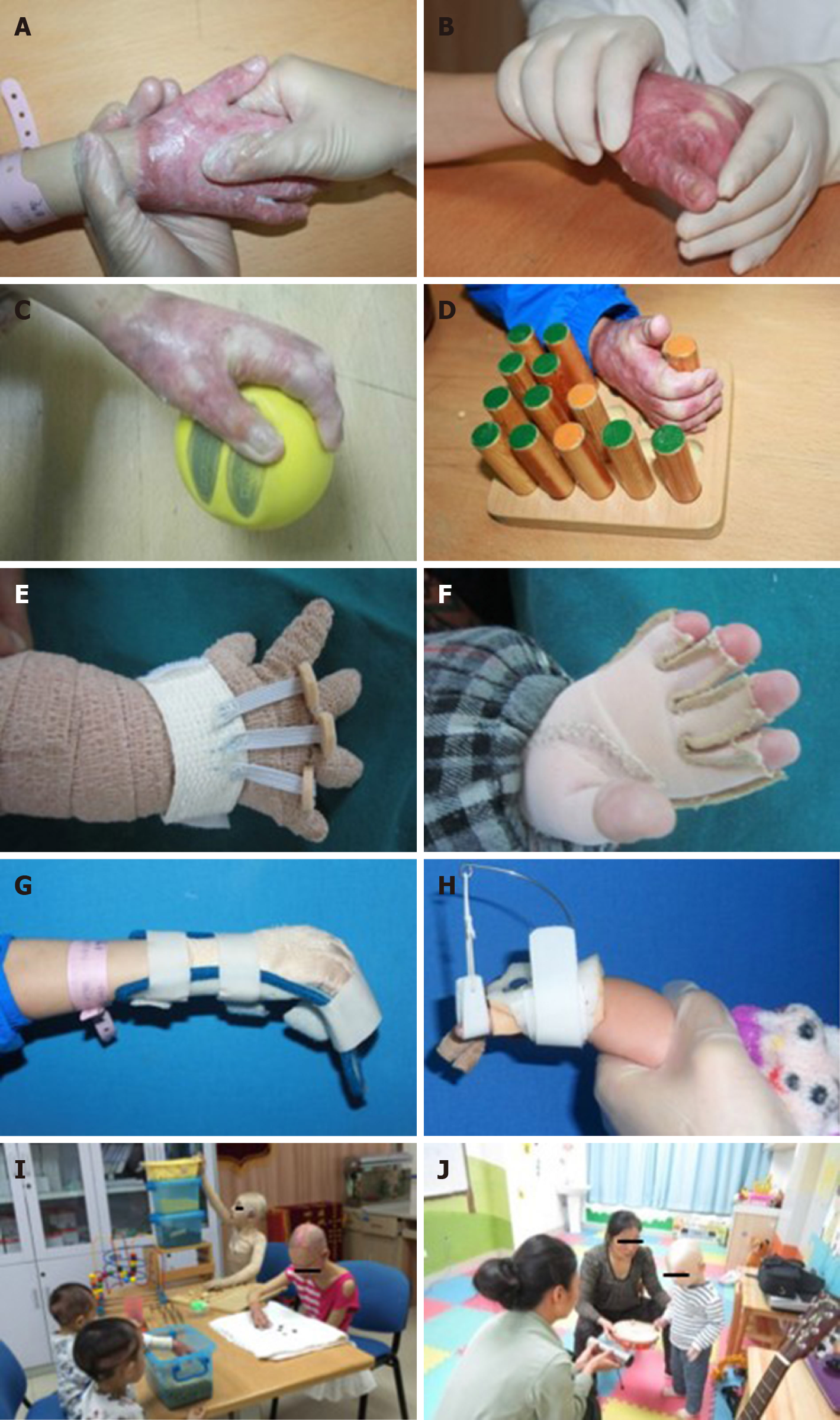Copyright
©The Author(s) 2021.
World J Clin Cases. Nov 16, 2021; 9(32): 9741-9751
Published online Nov 16, 2021. doi: 10.12998/wjcc.v9.i32.9741
Published online Nov 16, 2021. doi: 10.12998/wjcc.v9.i32.9741
Figure 1 Flow chart of the hand rehabilitation.
ROM: Range of motion.
Figure 2 Rehabilitation therapy.
A: Scar massage by the rehabilitation therapist; B: Passive ROM exercises by therapist; C and D: Active ROM exercise with grip; E: Compression therapy with adhesive bandage; F: Compression therapy with pressure garment; G: Static orthoses used in an antideformity position; H: Dynamic orthoses used in an antideformity position; I: Games Designed to play together; J: Music therapy with drum. ROM: Range of motion.
Figure 3 Photo images of patients before and after rehabilitation treatment.
A and B: 1 years old boy started to receive rehabilitation treatment within 1 mo after fire burn. The fifth finger had flexion contracture before treatment (A). But the active range of motion (ROM) of metacarpophalangeal point, proximal interphalangeal point (PIP) and distal interphalangeal point (DIP) were significant improved after 6 d rehabilitation treatment (B); C and D: 8 years old boy started to receive rehabilitation treatment at 5 mo after fire burn injury. Metacarpophalangeal and interphalangeal joints had extension contracture before treatment (C). However significant improvement of active ROM of PIP and DIP was evident after 7 d treatment (D).
- Citation: Zhou YQ, Zhou JY, Luo GX, Tan JL. Effects of early rehabilitation in improvement of paediatric burnt hands function. World J Clin Cases 2021; 9(32): 9741-9751
- URL: https://www.wjgnet.com/2307-8960/full/v9/i32/9741.htm
- DOI: https://dx.doi.org/10.12998/wjcc.v9.i32.9741











